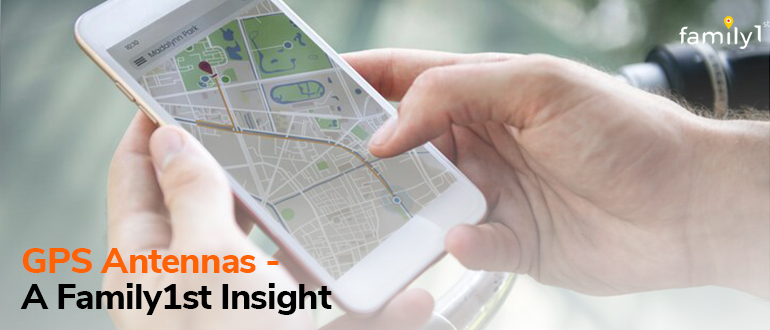Key Takeaways
- Install GPS trackers for concealment under the dashboard, inside the bumper, or under the car frame.
- Hardwired trackers go near the fuse box, plug-in trackers use the OBD port, and portable trackers fit in hidden areas.
- Magnetic trackers attach securely to flat, clean metal surfaces like the car frame or rear bumper.
The car GPS tracker is usually installed anywhere: under the car, in the dashboard, under the seat, in the boot, and more. The correct answer, however, would depend on the kind of tracker you bought.
In this blog post, we’ll explore the five best places to install a GPS tracker in your car, helping you make an informed decision that suits your needs.
There is a fixed place to install hardwired and plug-in GPS trackers in the car. But if you get a portable tracker, here are some of the places that you can put it inside and outside the car:
Under the dashboard
The dashboard is unobtrusive enough to remain out of sight and also typically stays out of the way of metal auto components that can interfere with GPS signals.
Inside the Bumper
Putting the tracker within the bumper gives it a concealed position, which is great for preventing theft. You can do this with either the front or back bumper. Remember to keep the tracker out of the elements and away from the vehicle’s systems.
Behind the seat
A discreet and practical area to store your items is behind the car seat. This makes it simple to check or remove the tracker.
Glove Box
Keeping a GPS tracker in the glove compartment is a wise move. Although it is easier to find and more noticeable, it is more beneficial for tracking driving habits within the family than for stopping theft.
Trunk
A GPS tracker can be easily hidden in the trunk; just locate a little nook or crevice and slide it inside. It also offers an extra layer of privacy.
Under the hood
Placing a tracker under the hood, especially in regions close to the battery, can be a viable solution. But before you do that, check that the gadget can withstand heat near an engine.
Where do people put trackers on cars?
The placement of a GPS tracker in a car depends on its type and intended purpose. Here are the most common and practical locations where people install trackers based on their functionality and use case:
There are three types of car GPS trackers:
- Hardwired GPS Trackers: Permanently connected to a vehicle’s electrical system, providing continuous power and data.
- Plug-in GPS Trackers: Easily connected to a vehicle’s OBD port, offering a straightforward, no-tools-required installation.
- Portable GPS Trackers: Compact and battery-operated, these trackers can be placed flexibly within or outside the vehicle.
Now let’s look at the best installation location based on device type and usage.
Best place to install a tracker in a car based on the device
| Type | Best Location | Installation Details |
|---|---|---|
| Hardwired | Under the dashboard or near the fuse box |
Connect the power wire to a constant power fuse using a fuse tap, and secure the ground wire to the car’s frame. Follow the manual instructions. Test to ensure functionality. |
| Plug-in | On-board diagnostics (OBD) port |
Easily installs into the OBD port under the dashboard near the steering column for easy power access. Movable between vehicles. |
| Portable | Glove compartment, under a seat, or concealed area |
No installation is required for the function. Can be placed freely or use a magnetic case to attach to any metal surface for discretion, such as under the car frame. |
Best place to install a tracker in a car based on the usage
| Reason for GPS Tracker | Suggested Placement | Purpose |
|---|---|---|
| Theft Prevention | Hidden (under dashboard, inside bumper) | To make it difficult for thieves to find and disable the tracker. |
| Family Safety | Accessible (glove compartment) | People you share the car with can easily check on the device. |
| Route Optimization | Dashboard-mounted | For real-time navigation and route adjustments. |
| Data Tracking | OBD port | To provide both location tracking and vehicle diagnostics, useful for record-keeping. |
| Emergency Assistance | Driver-accessible (center console) | Drivers can quickly send out warning signs in case of an emergency. |
Best Place to Put a Magnetic GPS Tracker on a Car
A magnetic GPS tracker works best when placed on a flat, metal surface for secure attachment. Ideal spots include under the car frame for concealment or inside the rear bumper to keep it hidden from view.
For short-term use, the wheel well can be a practical option but offers less security. Always clean the metal surface before attaching the tracker to ensure a strong grip and avoid interference with moving parts.
Family1st Portable GPS Tracking Device For Your Car
Family1st Portable GPS Tracker helps you track your car’s location in real-time, keeping it safe and secure. With features like geo-fencing and instant alerts, you’ll know when your car enters or leaves specific areas.
It uses 4G connectivity and has a battery life of up to two weeks for consistent updates. The compact design fits discreetly under the car, making it perfect for tracking and quickly recovering your vehicle if needed.
How to Install the Family1st GPS Tracker for Your Car
- Choose the Location: Place the tracker under the car frame, inside the rear bumper, or under a seat with a metal base.
- Install the Tracker: Use a weatherproof magnetic case (need to buy separately) to secure it on a clean, flat metal surface away from wheels or the exhaust.
- Activate the Tracker: Download the Family1st Pro App, activate the device, and start tracking your car in real-time.
Conclusion
The Car GPS tracker provides reliable protection against security and safety risks for your car. It helps monitor driving habits, assist young drivers, and prevent unauthorized use effectively.
Placing the tracker in the right location ensures it performs without interruptions. Use the discussed ideal spots to maximize its functionality and keep your car safe and secure.









Next
Previous